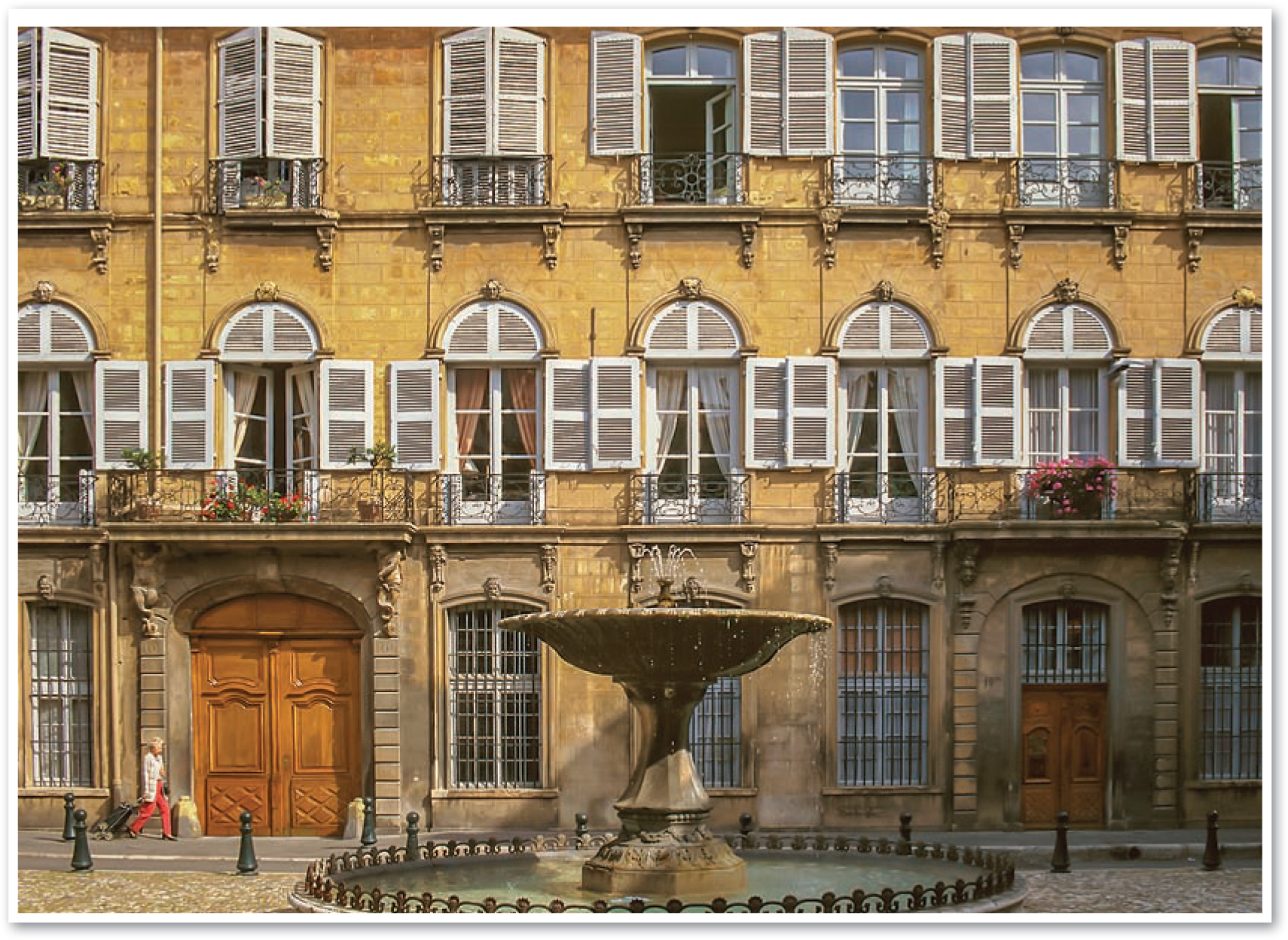Sound of the PlaceSound of the Place
![]()

PLATE THIRTY-NINE — Poster, Aix Music Festival
![]()
AIX HAS BEEN called “the city of fountains and music,” and the two are synonymous in it.
Summers, during the Festival, the whole town quivers to the sounds, in the open air of cloisters and courtyards, of violins and flutes and voices, and above them rises always the indescribably soft steady music from at least fourteen public fountains and uncounted murmuring basins hidden in gardens and inner courts.
Late at night the year around, and even during the midday hours in summer when all else sleeps, a person seeking it can hear water flowing and falling somewhere nearby, and then walk on a little to the magic radius of another and yet another fountain, rather as in the Tivoli in Copenhagen one can stroll from orchestra to orchestra without ever hearing the various sounds conflict and snarl.

PLATE FORTY — Violins
I would forever hear the little mandolin, plucked in the orchestra pit while onstage Don Giovanni pretended to play to the silent mockery of an inn where his mock-love listened. And I knew in a fine positive way that I could nevermore walk any street in the whole real world without hearing, somewhere up from the immediate sounds, the quiet music of the fountains of Aix.

PLATE FORTY-ONE — Don Giovanni’s Costume

PLATE FORTY-TWO — Four Dolphins
Each quarter in Aix has its main public fountain, to which it is unquestioningly loyal. It is always the clearest, purest, most beneficent water to its users, in this or that particular source, which springs up through the subterrain as if through a miraculous filter, here warm and fumy, there icy-sweet.

PLATE FORTY-THREE — Fountain, Place d’Albertas

PLATE FORTY-FOUR — Boar Fountain

PLATE FORTY-FIVE — Vieux Port

PLATE FORTY-SIX — Marseillaise